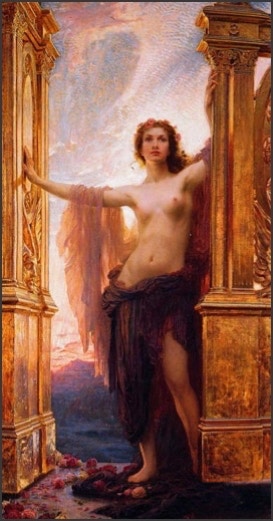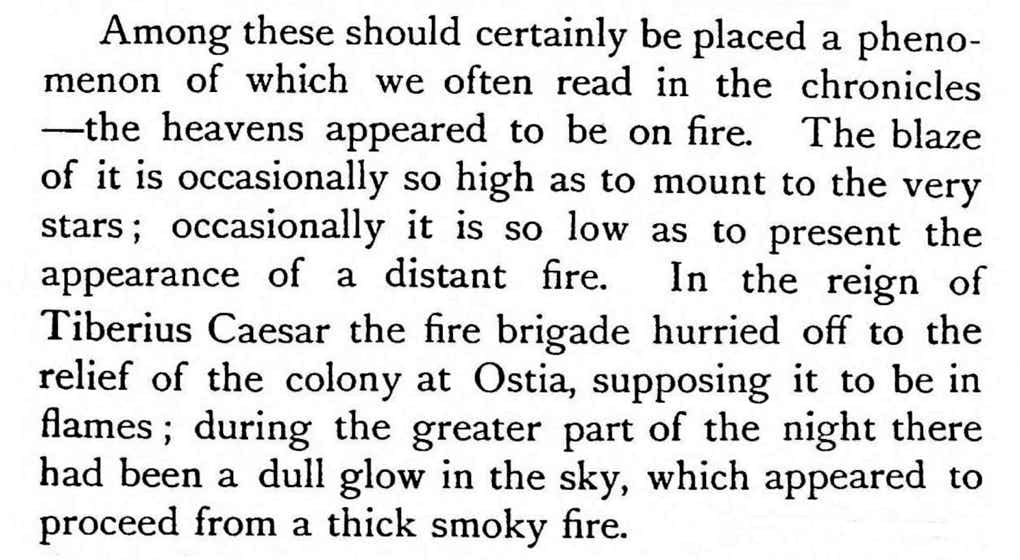

The Gates of Dawn
Herbert James Draper
(1864–1920)
‘Far in the crimsoning east wakeful Dawn threw wide the shining doors of her rosefilled chambers’ wrote Ovid in the Metamorphoses, and that’s what we see her doing in the painting above by the English artist Herbert James Draper.
Aurora was the Roman goddess of the dawn (her Greek equivalent was Eos), but in astronomy her name is associated with the aurora borealis and australis, the northern and southern lights.
The first person to apply the name aurora to this phenomenon was Galileo Galilei in 1616. The additional distinction between ‘borealis’ meaning north and ‘australis’ meaning south came later when explorers such as Captain Cook first ventured far into the southern hemisphere in the 1770s and it was realized that there were southern aurorae as well as northern ones.
Hence the term aurora borealis actually means northern dawn, which is a good description of it as seen from latitudes such as England, where only the top of the activity can usually be seen low on the northern horizon like a false dawn.
In Greek mythology Eos was the sister of the Sun god Helios, for whose chariot she threw open the gates of heaven each morning, and also the sister of Selene, the Moon goddess. She was said to be mother of the stars, including the Morning Star (the popular name for planet Venus). The mythographers described her as ‘rosy-fingered’ and ‘saffron-robed’ in reference to the pink tinge of the dawn sky. She was for a time a lover of Orion.
We now know that aurorae are glows of the upper atmosphere around the poles caused by atomic particles from the Sun. But in Roman times aurorae were interpreted as omens of disaster, similar to or even worse than comets. Pliny the Elder, a Roman writer of the first century AD, described aurorae as ‘them which there is no presage of woe more calamitous to the human race, a flame in the sky, which seems to descend to the Earth on showers of blood’.
This description might at first seem puzzling, since aurorae are predominantly green in colour; but as seen from more southerly latitudes, such as the Mediterranean region, only the upper, red-coloured portions would be visible above the northern horizon. The red colour is particularly prominent in the strongest aurorae, and it is only those that will be seen as far south as the Mediterranean.
A blood-red aurora would inevitably raise fears of war and death, but it might also be mistaken for the glow of a fire. Such a mistake was reportedly made during the reign of Emperor Tiberius (AD 14—37) by Roman fire brigades who rushed to the port of Ostia, thinking it to be burning down. But it was in fact a red aurora. More recently, a major aurora in January 1938 had fire brigades dashing in search of imaginary fires throughout Europe as far south as Austria and Switzerland.
People of the far north have many legends about the aurorae. An attractive selection can be found on this page by the late Ingrid Sandahl of the Swedish Institute of Space Physics:



